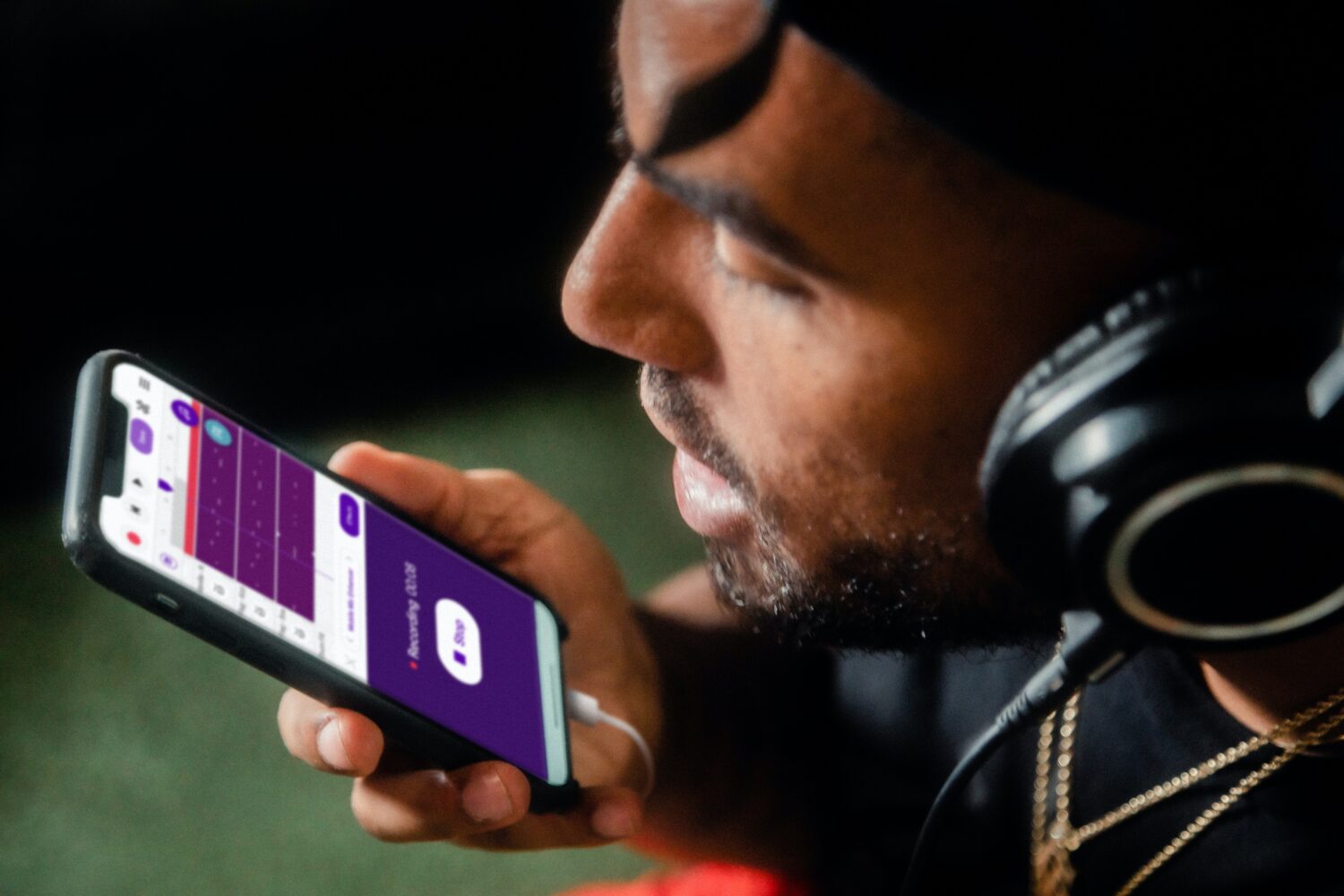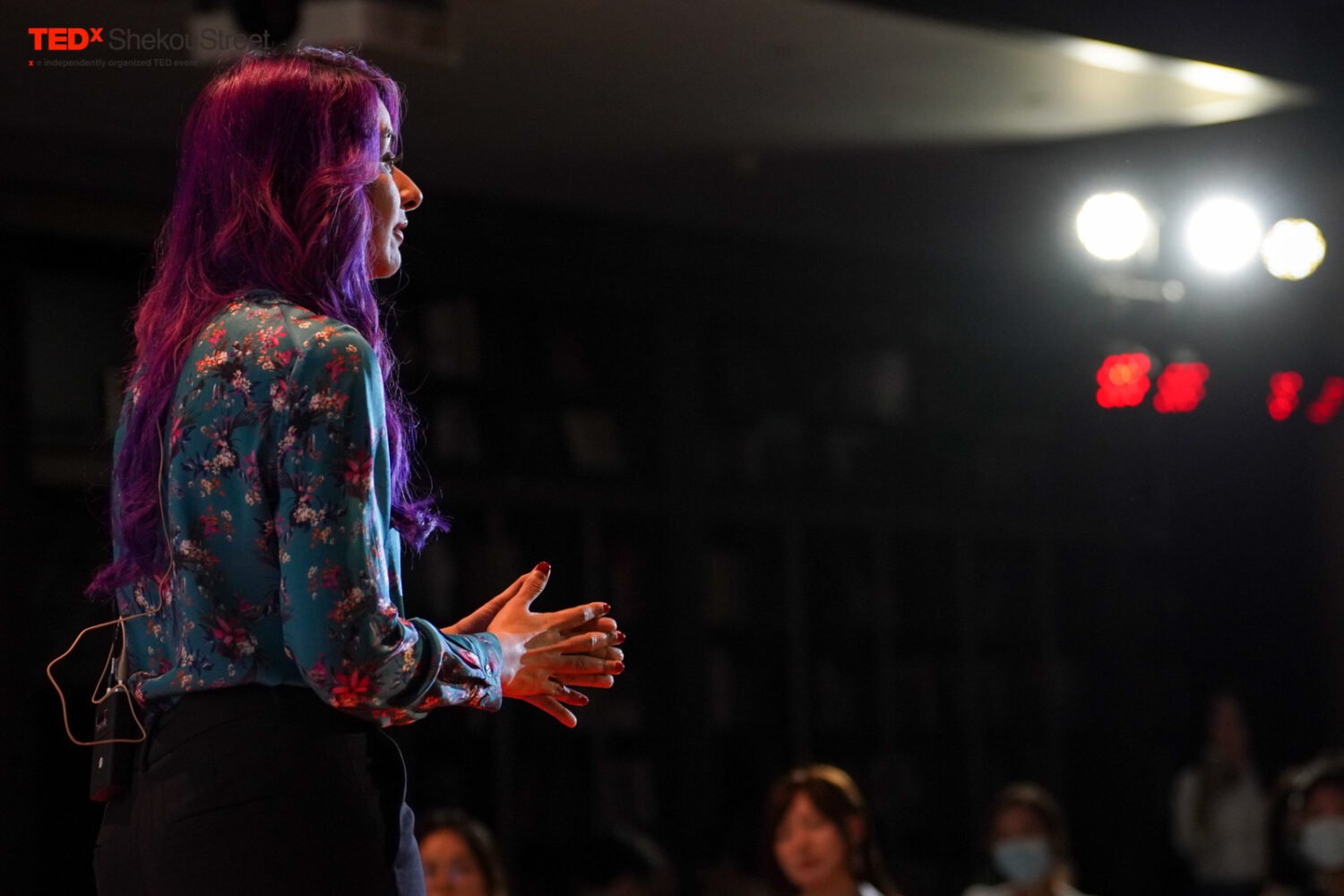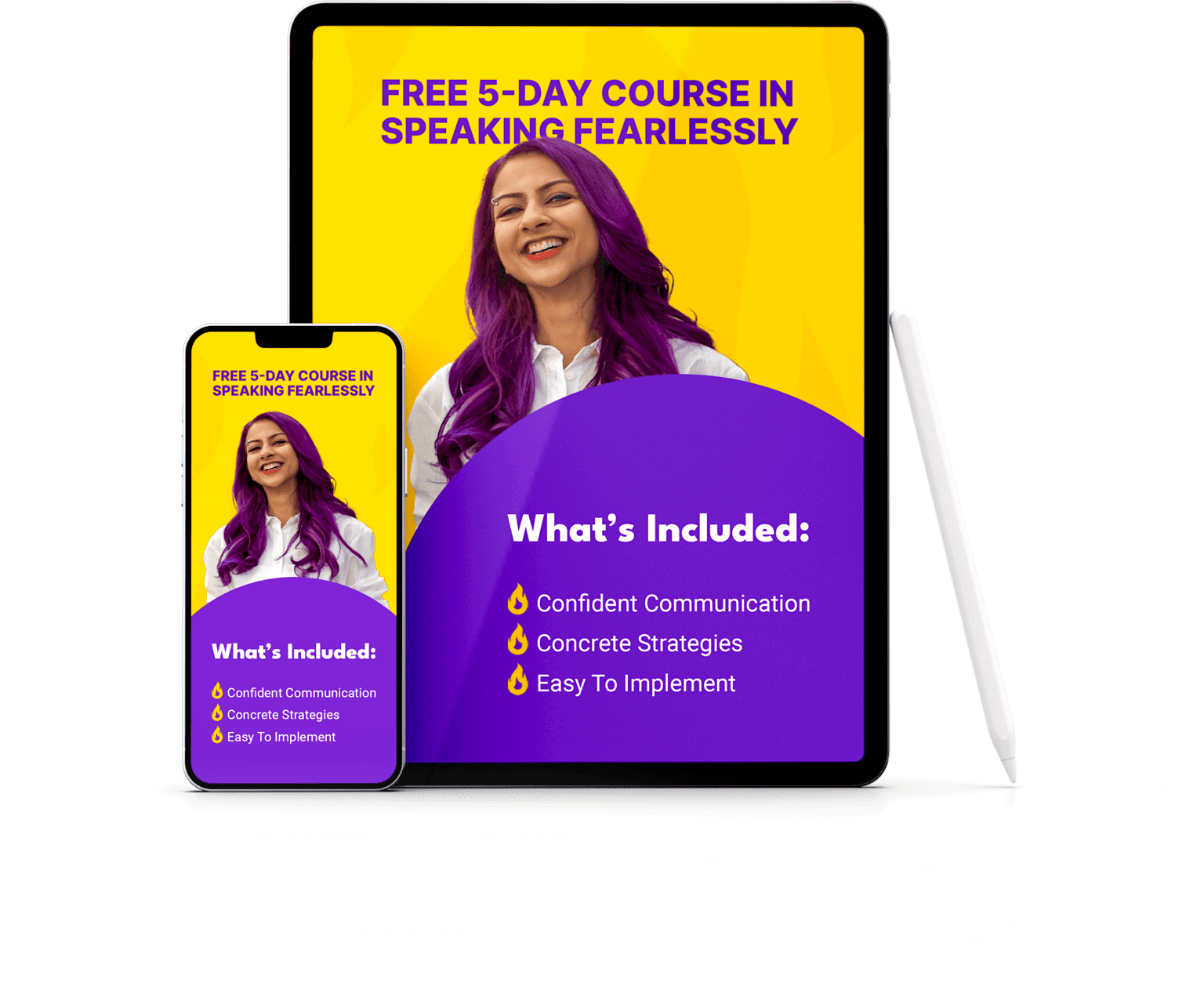Speaking in public is an art and a science. When you look at someone who shines on stage or on camera, you might think that they’ve always been charismatic. But being a strong public speaker can absolutely be learned. Every speaker who knows how to capture the attention of their audience has a speaker’s toolkit: an essential set of skills that they use to stand out and become memorable.
The good news is – I can teach you what you should have in your speaker’s toolkit in this article. You’ll learn how to create a powerful presence on any stage or camera – and speak fearlessly every single time you’re in the spotlight.
Table of Contents
1. The Speaker’s Winning Mindset
Mindset 1: Practice vs Improvisation
Every speaker focuses on both their content as well as their delivery. The key is to never shy away from prepping ahead of time: whether it’s creating your Powerpoint slides well in advance so that you get plenty of time to rehearse your delivery, or making sure you get feedback from your team on how you’re delivering.
The best speakers I know never aim to “wing it”. Even if you don’t get time to prepare for a presentation that you need to deliver in a hurry – if you invest in building your public speaking skills from now on, you’ll be in a position to improvise if needed.

Photo by Soundtrap on Unsplash
Mindset 2: Building a positive feedback loop
The second most important mindset to embrace when speaking in public is to create a positive feedback loop for yourself: practice so that you feel prepared, and then debrief after you’re done so that you know what you did well and what you can improve on next time. This is essential so that you can respond to the negative voices in your head when you start doubting your abilities to perform.
If you’re building a positive feedback loop, you’ll be arming yourself with proof that you’ve performed well under pressure and can do so again.
Mindset 3: Reframe anxiety and nerves
I often get asked – “What do I do when I’m in the middle of a presentation and my mind goes blank Nausheen?”
There’s no magic answer.

Photo by Khaled Reese:
But there is a solution. It starts way before you start speaking: reframing your nerves and anxiety so that you make yourself more comfortable when you’re in the spotlight.
According to research: the body produces the same physiological reaction whether you’re excited or nervous. It’s then up to the brain to label that emotion. Your brain can reframe the emotion of “I’m so nervous” to “I care about the outcome, I’m excited to use this opportunity”.
This reframe has the power to reinterpret the nerves for you so that you don’t feel the negative impact of the nerves themselves – only the positive impact of caring enough to feel them in the first place.
2. Unshakable Audience Focus
Great speakers focus on the audience from the point of prepping for their presentation or podcast, and retain the audience focus till the final delivery.
Audience focus while preparing for public speaking
It’s vital to know as much as possible about your audience before you even start preparing your slides, script or key points. Whether you’re doing a podcast which will be heard or watched by an audience later, or delivering an in-person presentation in front of a live audience – aim to get information on the audience demographics, their current level of knowledge as well as knowledge gaps and their expectations of your talk.
This information will guide you on your tone of voice as well as how much detail you go into in your area of expertise. It will also help you choose the kind of visuals to use -e.g. Is it a meme-friendly audience or one that might not appreciate them?

Image by master1305 on Freepik
Audience focus during the presentation
Aim to engage the audience proactively during your talk or podcast.
Don’t think of your presentation as a one-way lecture. The audience will tune you out and your message will be lost.
Weirdly – I’ve seen a lot of people get audience engagement wrong. A lot rely on the old “Any questions?” to engage the audience every once in a while. While this might work in a classroom, most people in a meeting or presentation need something a bit more concrete to respond to.
The key insight here is that the audience is lazy and shy – and that makes for a complicated combination. You need to facilitate audience interaction by asking simple yes or no questions, taking audience polls and letting people know exactly how they can respond.
Audience engagement gets trickier in a podcast or video content where the audience is not immediately or directly present when you talk. In this case – include subtle cues in your content that lead the audience to imagine that it’s a conversation they’re having with you. For example, ask them to imagine something. Ask them a question and talk to them as they think through it.

Image by mego-studio on Freepik
Audience engagement is vital – not just to be “nice” to the audience, but to make sure your message lands. An engaged audience processes your message faster and is more likely to remember it.
Audience focus after your presentation
Don’t lose the opportunity to get feedback from the audience after you’ve delivered a presentation or done a podcast. Leave contact details, ask the organizers if you can share a feedback form and go a step further to give them an incentive to get back in touch.
I’ve seen some speakers use clever post-talk engagement techniques like letting people know they can download their slides if they scan a QR code, which lets them sign up to a mailing list (with their consent, of course). Think of something you can offer to the audience beyond the current speaking engagement – this way you’re letting them carry on the journey of getting to know you.
3. The Power of Visual Psychology: Crafting Compelling Presentations
The Visual Appeal
Humans are visually wired beings. When crafting presentations, it’s not just about relaying information but creating an immersive experience. Use these techniques to always make sure your presentation slides stand out:
- Use keywords and key phrases on slides, not full sentences.
- Aim for a maximum of three sub-points per slide.
- Leave breathing room in your presentation by having some full-frame pictures and less text on some slides.
- If you want to add a video, ask yourself whether it needs to have sound, which might disrupt your flow, or if it can play silently in the background while you present.
- Add proactive audience engagement every 5-7 slides so that you’re never talking for too long at a time without engaging the audience.
Themes, Colors, Images
Aim to use consistent colors, fonts and imagery. The entire presentation should follow a specific style – this bolsters the image of professionalism and expertise.
Stock images have become a bit too predictable. I’d highly recommend using original images wherever possible, so that you can captivate more attention. For example, instead of showing a generic picture of a team, show your team – even if the photo isn’t a “pro” one, it’ll look and feel more authentic.

Nausheen I. Chen on the TEDx stage
4. Body Language Mastery: Non-Verbal Communication
The Silent Communicator
Body language is the unsung hero of effective communication. Understanding how your gestures, posture, and facial expressions influence perception is pivotal in establishing a genuine connection with your audience.
Body language when presenting in-person
When you’re presenting at a live event, you’re a bit more “exposed” vs speaking online or on camera. Use these body language techniques to always remain calm and project confidence:
- Use a power stance: stand shoulder width apart. Plant your feet firmly on the ground and aim to activate your upper body. This shows a great balance between being grounded and stable with your lower half and showing dynamism with your upper half.
- Be aware of your gestures and aim to vary them. Think of your gestures as a way to paint the scene – letting your audience imagine and paint a picture of what you’re talking about.
- Move with purpose: You can absolutely walk around the stage. But I’d advise you to not walk randomly and not walk all the time – otherwise you risk coming across as an impatient lion in a cage. Pick three spots on the stage – and alternate between them. Spend some time standing in each spot and talking to the audience and then move in between them.

Photo by ThisIsEngineering:
- Make eye contact with the entire audience, not just one section. A lot of people make this mistake – they somehow look only at one section of the audience, while others feel left out.
- Expressions: A lot of speakers have a poker face because we’re not used to showing a lot of emotion in our everyday lives. However, on stage, if you can show clear and animated expressions, it’ll be much easier for the audience to develop an emotional connection with you and your content.
Body language when presenting on camera
On camera, you have a huge advantage: you only need to worry about your body language for the upper half of your body. Unfortunately, this can also be the biggest disadvantage. Your audience has less visual data on you, so it’s harder for them to connect with you.
When you’re on camera, the key is to start gesturing within the first 10 seconds of you speaking. This ensures that you get yourself in the “gesturing” mindset and also lets the audience immediately see more of you.
Here are 5 gestures you can use on camera to enhance your impact:
5. The Power of the Voice
Your voice is your most powerful tool as a speaker – yet a lot of people don’t use it well.
In our everyday lives, we get lazy and monotonous. We only use a limited section of our vocal range because we can get away with it. However, when you present, if you’re flat and mono-toned, the audience will find it hard to pay attention to you for a long period of time.
You can address this monotony (get it?) by understanding and applying the different elements of your voice to create a more engaging experience. Your vocal presence is made up of your:
- Pitch
- Pacing
- Pauses
- Projection
- Pronunciation
Here’s how to use each element of your voice to it’s fullest to achieve impact when you speak in any setting:
- Vary your Pitch:
When you speak with the same pitch throughout, you’re not giving the audience any vocal data on when your emotional state has variance. Aim to intentionally vary your pitch so that you can achieve specific emotional effects: for example, raise your pitch to show excitement or drop it down to a deeper pitch when you want to add drama or seriousness. - Control your pacing:
A lot of people speak too fast. First, aim to gain control of your pacing and then play with it to become more effective as a speaker. Increase your pace when you want to show something happening quickly, for example, or decrease it to emphasize something important. - Add pauses:
I guarantee you aren’t pausing enough. Pauses can be very effective when used well. Aim to use two types of pauses when you speak: functional pauses which follow punctuation and strategic pauses that can add drama. Pause after a full-stop or at a comma. And then pause when you want the audience to reflect on an important question, or register an important statistic. - Projection:
This is the volume at which you speak. You don’t need to yell, but neither should you be too quiet. The idea is to be clear, assertive and bold. Watch out for the radio announcer voice creeping through your tone though. You should aim to sustain a conversational tone throughout your talk.
- Pronunciation:
Actually, a better term to use here would be enunciation. This is how clearly you pronounce every word. A cheat code here: if you enunciate well, people perceive you being more confident. This comes down to realizing when you’re mumbling or rushing over words, and then slowing down and taking time to enunciate every word. Watch out for sentences that trail off at the end – that means you’re in a hurry.
6. The Secrets of Energy
People often get energy wrong. They believe that they can show up on camera- on a podcast or a presentation – with the same energy as they have in a regular (boring) conversation. Or worse – with the same energy as they have when checking their email!
When you’re addressing an audience – whether it’s in person or online – you have to be the bearer of the energy. You’re the energy ceiling and floor: the audience will either try to rise to match your level of energy or sink to it. Once you realize you’re the one setting the energy and tone of the room, you seize back control.

Image by master1305 on Freepik
Raise the audience’s energy level by showing your own passion and enthusiasm. Use an active tone of voice, add audience engagement and be expressive. The more effort you put into this, the more the audience will appreciate you.
A watch out here: don’t be a steamroller. Bringing more energy doesn’t mean not listening to the audience, talking too fast or too much or not reading the room. If the audience is a bit low, meet them halfway instead of presenting such vivacity to them that it turns them off.
Here are 3 ways you can bring energy to your next presentation:
- Warmup before the presentation: use physical warmups (like the ones you do before a workout), vocal warmups and expression warmups. This will get you moving, into the zone and ready to go.
- Listen to a favorite song and/or dance
- Talk to someone you like before you need to go on stage or on camera
Intentionally tapping into a higher energy bracket before you start to speak will help you start on a high note. The audience will feel more invited to the conversation that way.
Conclusion
The speaker’s toolkit is always evolving – but these essentials should help you get off the ground and running. Whether you’re an experienced speaker or a newbie – I hope brushing up on these fundamentals helps you deliver your next presentation, podcast or webinar with more oomph and impact.
Want to become a more powerful speaker in 2024? Let’s talk.

